Good Morning America
Experts predict lasting environmental damage from Russia’s invasion of Ukraine
Julia Jacobo – April 20, 2022
As Russia’s invasion of Ukraine continues, environmental experts and activists are warning of a ripple effect of problems, including long-lasting damage to the war-ravaged country’s urban, agricultural and industrial areas.
Nearly two months into its invasion, Russia has begun its long-feared offensive in eastern Ukraine along the 300-mile front near Donbas, a region with a 200-year history of coal mining and heavy industry.
The past seven weeks have been mired by death, displacement and the demolition of a country’s landscape that will take years to repair, experts told ABC News. In addition to the direct impact on Ukrainians, consequences of the war will be felt socially, economically and environmentally.
“Russia’s invasion of Ukraine raises a host of unique and potentially profound environmental concerns for not only the people of Ukraine, but the wider region, including much of Europe,” Carroll Muffett, president and CEO of the Center for International Environmental Law, told ABC News. “Those human impacts of the war take on a lot of forms and a lot of dimensions, and many of them last long after long after the hostilities have ceased.”
While there were catastrophic environmental consequences during World War I and II, conflicts during recent history provide a more detailed blueprint for the sheer amount of greenhouse gases emitted during modern wars.
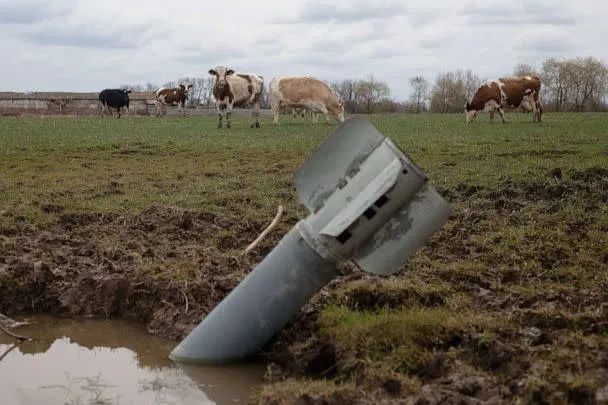
As a result of the global War on Terror that began in 2001, 1.2 million metric tons of greenhouse gases were released, the equivalent to the annual emissions of 257 million passenger cars — more than twice the current number of cars on the road in the U.S., according to a 2019 report released by Brown University’s Watson Institute of International and Public Affairs.
In addition to the hundreds of thousands of tons of carbon monoxide, carbon dioxide, nitrogen oxides, hydrocarbons and sulfur dioxide emitted from military vehicles, and other heavy machinery, heavy deforestation occurred in Afghanistan as a result of illegal logging, especially by warlords, which then destroyed wildlife habitat, according to the report.
“We now understand the environmental dimensions of war in ways that we didn’t decades ago,” Muffett said. “This is a particularly egregious situation, because the entire world is calling for Russia to end its its invasion right now.”
Once the conflict is over, the environment in Ukraine is going to be the local government’s “No. 1 priority,” Doug Weir, research and policy director of The Conflict and Environment Observatory, told ABC News.
MORE: Russia begins long-feared offensive in Ukraine’s east
These are the areas of most environmental concern, according to experts:
Industrial regions
Ukraine is a heavily industrialized country, especially in its eastern regions. It contains a large number of mines and refineries of chemical plants that produce substances such as ammonia and urea, Muffett said.
Assessing the damage from attacks on industrial sites and new nuclear facilities will be among the Ukrainian government’s priorities, Weir said.
In addition, there are “serious concerns” about the forced closure of several coal mines, which are now flooding with acid mine drainage without the proper methods to pump out the water, Weir said. Those toxins are then seeping into the groundwater aquifers
“We’ve already seen hints at how those could play out,” she said, adding that multiple refineries in Ukraine have already been hit. “One of the things that the lessons of the the invasion of Kuwait and the Iraq war is teach us is that strikes against facilities of these kinds pose profound risks for massive releases and really long-term damage.”
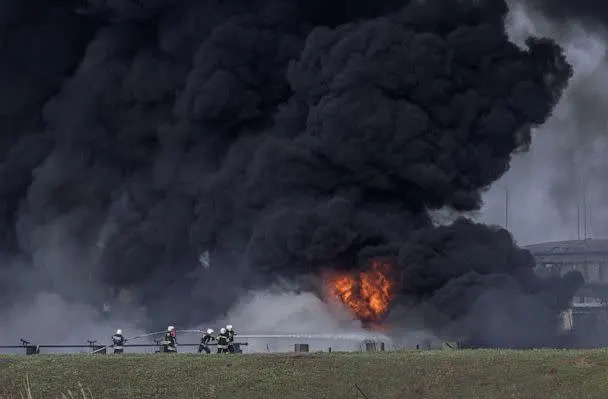
Agricultural fields
Researchers are estimating that millions of people could suffer from malnutrition in the years following the invasion as a result of lack of arable land.
Initial assessments show large swaths of agriculture areas affected by heavy shelling an unexploded ordinances, Weir said.
Olha Boiko, a Ukrainian climate activist and coordinator for the Climate Action Network for Eastern Europe and East Asia, said she and her fellow activists still in Ukraine are worried about the state of the agricultural fields and their suitability to grow wheat after the war, which is one of the country’s largest exports, she said.

Wildlife and natural ecosystems
The plethora of military vehicles trampling over the Ukrainian border are creating an unforgiving landscape, experts said.
In an effort to defend their country, Ukrainian military laid landmines over at least one beach near Odesa, according to the Conflict and Environment Observatory.
Boiko also alleged that Russian forces have blown up oil exporting equipment, polluted the Black Sea and filled fields with landmines, which were found as Russian forces retreated the regions surrounding Kyiv.
MORE: Images show destruction left in Ukraine town of Borodyanka after Russian occupation
Fighting close to Kherson, near the southern coast of Ukraine, resulted in fires in the Black Sea Biosphere Reserve that were so large they were detectable from space and likely destroyed trees and unique habitats for birds, according to the observatory.
“There have been risks to wildlife and biodiversity we’ve seen that play out in Ukraine, with active battles in in insignificant wetlands,” Muffett said.
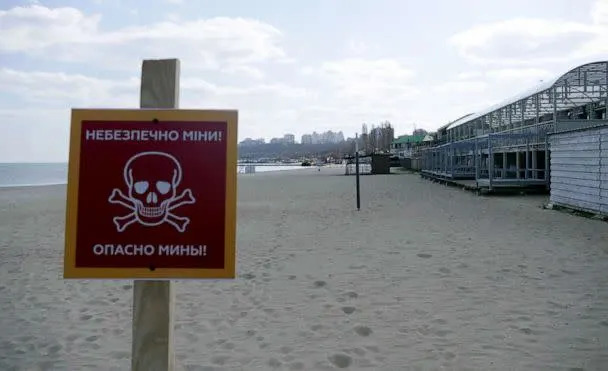
Urban areas
One of Russia’s military strategies has been to besieging cities by firing weapons indiscriminately into them, Weir said.
When Russian troops retreated the areas on the outskirts Kyiv after failing to take the capital, the devastation left in cities such as Bucha, Borodyanka and Irpin was immediately apparent.
Buildings were burned or completely destroyed. Burned-out cars littered the roadways. Entire neighborhoods were reduced to rubble.
The rebuilding phase is going to be a “huge task,” Weir said.
“From an environmental point of view, there’s going to be a huge amount of work needed to properly assess these sites, locate potentially hazardous sites,” Weir said, adding that environmental remediation process for the potentially hazardous sites can be complex and expensive.
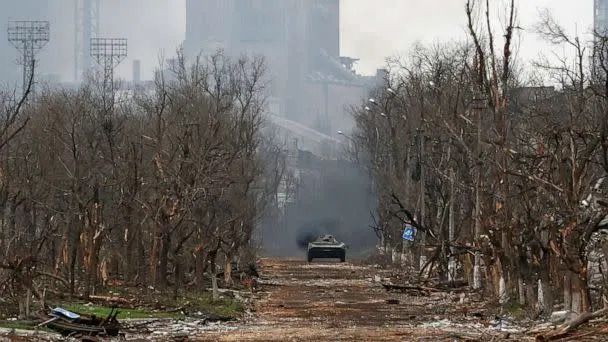
Nuclear facilities
Soon after the conflict began, Russian troops took hold of the exclusion zone surrounding the Chernobyl power plant, raising concerns that an errant explosive could create another radioactive event at the site of the world’s worst nuclear accident in 1986.
The destroyed reactor was sealed in 2019 under a $2 billion stadium-sized metal structure, but the other three untouched reactors remain fully exposed. Within them sits a pool of 5 million pounds of spent nuclear fuel, as well as dangerous isotopes, such as uranium and plutonium. If hit, the storage facility has the potential to cause an even larger disaster than in 1986 and could prompt widespread evacuations all over Europe, Muffett said.
MORE: Protecting natural resources could lead to less armed conflict: Report
“The conduct of active military operations in a country with four nuclear facilities and 15 active nuclear reactors poses extraordinary risks,” Muffett said, admonishing Russia for immediately targeting Chernobyl despite “no legitimate military objectives associated with that site.”
Russian troops have cut off power to Chernobyl in ways the site was not “sustained for,” and untrained Russian servicemen disturbed radioactive soil and raised dust as they moved through the area, Muffett said.
“We’ve seen missile strikes actually put a nuclear facility on fire,” she said. “And, in the immediate hours after the fire began, firefighters were unable to reach the blaze, because they were in a live fire situation. These are these are really extraordinary risks.”
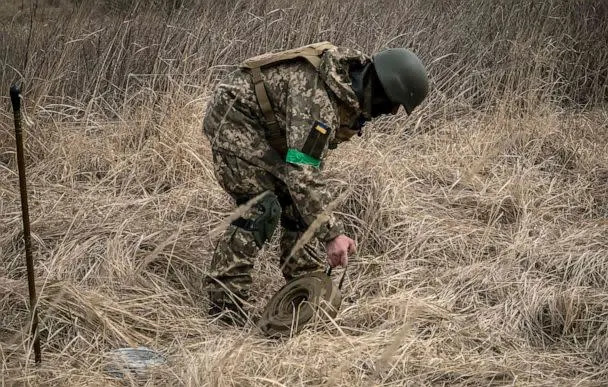
The role Russian oil plays in the conflict
The conflict in Ukraine is the latest demonstration of the “deep linkages between fossil fuels and conflict,” Muffett said. Boiko, who left Kyiv on Feb. 24, said the connection that fossil fuels play in the current war are “obvious,” because Russia is using the funds from its oil industry to fund the conflict.
“We’ve seen Putin’s regime look to weaponize its own natural gas and oil resources as a way to intimidate countries in Europe and beyond from coming to Ukraine to aid,” Muffett said. “And so, this is a fossil fueled conflict in every conceivable way.”
The environmental activists who remain in Ukraine, those who aren’t helping with the immediate humanitarian relief, are bringing attention to the fact that the E.U. and U.S. have been “very dependent” on Russia’s fossil fuels for years, Boiko said.
While the U.S. has imposed sanctions on all Russian oil and other energy sources, the European Union’s embargo only extends to coal, and not to oil and gas. About 40% of the EU’s gas comes from Russia, according to the observatory.
“This is exactly the leverage that has been used by Russia that is pressuring, basically, other countries to not impose sanctions to not do anything about this war to not help Ukraine,” Boiko said.
MORE: Concerns mount over conflict in Chernobyl exclusion zone
But Boiko said the conflict and the aftermath could eventually lead to positive steps in the fight against climate change, because the sanctions imposed on Russia lead to less less fossil fuel consumption. She said the phasing out of fossil fuels could happen more quickly, now that a major world player in oil exports has essentially been eliminated.
“The fact that this conflict is accelerating conversations within Europe about how they free themselves from reliance on fossil oil and fossil gas is also a big step forward,” Muffett said.
